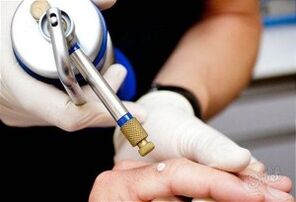To combat tumors on the skin, an ointment for papillomas is often used.The effectiveness of this product depends on the composition, type of action and degree of infection.Papillomas on the body and mucous membranes arise when the papilloma virus penetrates the body.
Therefore, the use of ointments, creams and gels usually only has a local effect.The virus does not disappear from the blood.The use of ointments and at the same time antiviral drugs to strengthen the immune system helps to avoid relapses.
Methods for removing papillomas
Papillomas are benign skin growths.In very rare cases, a papilloma can develop into a malignant tumor.If the papilloma does not cause any discomfort (physical or emotional), it does not need to be removed.

However, if the tumor causes pain, for example when rubbing against clothing, it must be treated.It is best to consult an experienced doctor about the possibility and choice of treatment for papillomas.Experts often recommend removing papillomas using one of the following methods:
- Surgical (excision under local anesthesia).
- Liquid nitrogen (cryodestruction).
- Acid.
- Laser.
- Electric current (electrocoagulation).
Many people use folk remedies in the fight against papillomas.Before using traditional methods, you should consult a doctor.For example, some products cannot be used on the face, while others may cause individual side effects.
The use of ointments to remove papillomas is a milder method of combating tumors, in contrast to immediate surgical or laser removal.
Types of ointments
All ointments to combat papillomas can be divided into two types:
Ready-made ointments are sold in pharmacies or specialty stores and are available in three versions:
- Ointments based on active acids.Well-known antiseptics have anti-inflammatory properties.It is not recommended to use such ointments to treat papillomas on the face.In addition, the drugs can cause individual side effects and are not recommended for children and people with kidney failure.The effect occurs after several weeks of use.These ointments are not effective in all cases.
- herbal ointments.The active ingredients of the ointments penetrate deep into the roots of the papilloma, and the powders have a detrimental effect on the papilloma itself.Since the products consist of medicinal herbs, an allergic reaction is possible in allergy sufferers.Herbal remedies such as acid-based drugs do not act on the cause of the disease, but help eliminate its external manifestations.
- Antiviral ointments.From the name it is clear that such ointments act on the cause of papillomas - the virus.The drugs disrupt the development and reproduction processes of the virus.
Ointments can also be prepared at home.The best known and most effective is vinegar ointment.A washed, clean chicken egg is placed in a cup and filled with vinegar (essence).Close well.When the shell dissolves, remove the film that was under the shell, add the interior fat and mix well.The ointment is stored in the refrigerator and has a shelf life of several years.
Garlic-vaseline ointment, ointments based on celandine and petroleum jelly, vinegar and flour are also prepared at home.Homemade ointment can damage healthy skin, so it should be used very carefully.
Skin treatment after papilloma removal
The use of skin care products, including ointments, after papilloma removal must be discussed with a doctor.The skin at the donor site is thin and sensitive, and infections can easily enter the wound.
The doctor will recommend treatments for the wound and inform you about the possibility of using cosmetics.It is not recommended to use products until the wound has healed.
After removing papillomas, you need to carefully monitor your skin, follow your doctor's recommendations and strengthen your immune system to prevent the appearance of new papillomas.

























